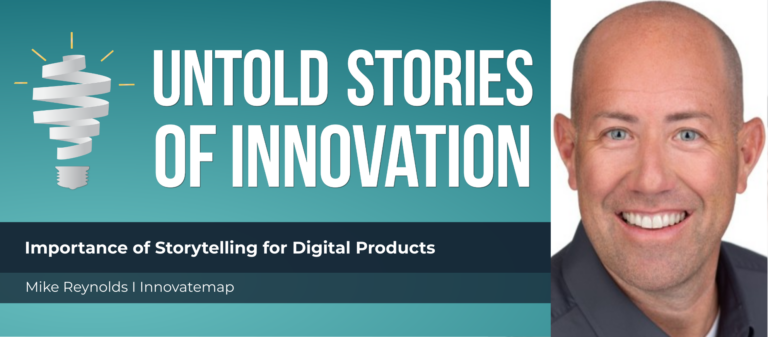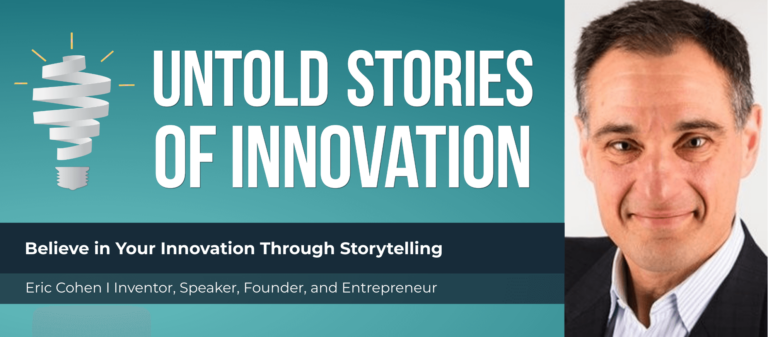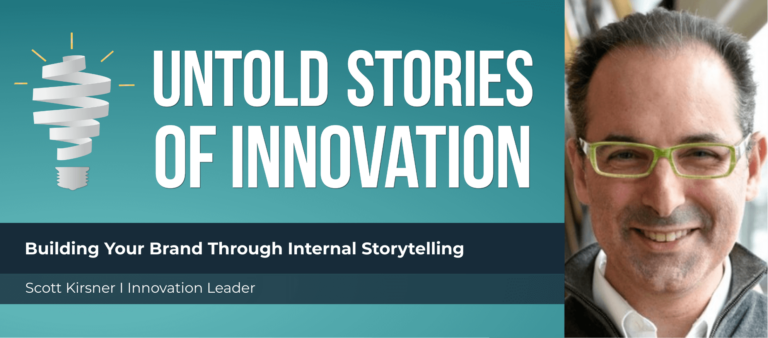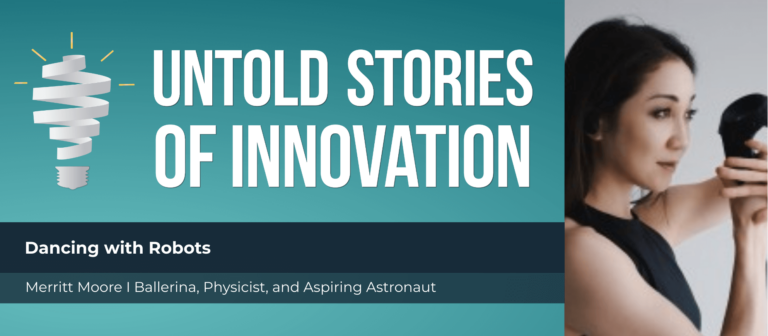Innovation in Gaming with Maria McLane
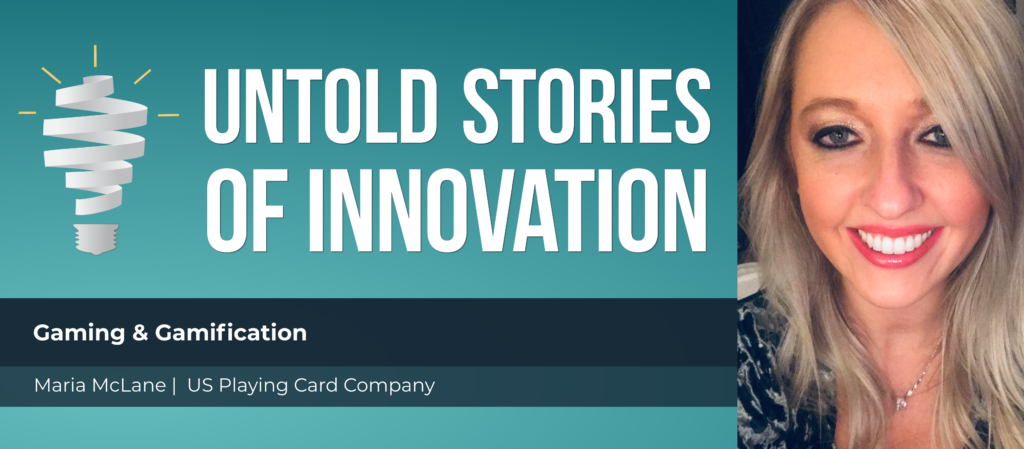
Untold Stories of Innovation
Innovation in Gaming
“A novice or someone in an adjacent field oftentimes has the better perspective because they're not so immersed in the day to day details and they can look at the bigger picture.” -Maria McLane, expert in innovation in gaming and innovation project manager at the US Playing Card Company
From today’s episode you’ll learn:
Why do stories matter to the innovation process? What values can be instilled in innovators who share stories? How do innovation leaders inspire creators to tell and share their success and failure stories?
In our conversation with Maria McLane, the innovation project manager at the United States Playing Card Company, we discuss interdisciplinary collaboration as a key driver for innovation in gaming. The US Playing Card Company has a long history of uniting people through conversation, laughter, and healthy competition. Maria details how the company continues to develop games that foster nostalgia and connection for a wide audience and speaks to the importance of pitches powered by empathy and story. You don’t have to take our word for it—check out their new game, It’s Blunderful.

Maria is an expert in innovation in gaming and currently serves as Innovation Project Manager at The United States Playing Card Company and the inventor of It’s Blunderful™, an adult tabletop party game. In 2019, Maria served as a Mentor for the Chicago Toy and Game Fair Young Inventor Challenge. She and her R&D team were nominated for a TAGIE award for Innovative Art and Design Visuals of the Year for their kid’s games Super Me and Monkey, May I?, both designed to reinforce social skills and stimulate emotional intelligence. Maria is passionate about working with diverse inventors to bring to life games that not only foster social interaction and relationship building, but also enhance creativity and generate conversation and storytelling.
This episode is powered by Untold Content’s Innovation Storytelling Training. Increase buy in for your best ideas in this immersive and interactive, story-driven experience. Where your teams refine storytelling techniques for their latest projects, prototypes and pitches—and get inspired by 25 epic examples of impactful innovation stories.
Katie [00:00:00] Our guest today is Maria McLain. She is the innovation project manager at the United States Playing Card Company. One of their latest games is Its Blunderful. It’s so much fun and a little embarrassing. It’s so great to have you on the podcast, Maria. Thank you for being here.
Maria [00:00:15] Thank you. It’s a pleasure to be here.
Katie [00:00:17] Before we dive in to talking about innovation in gaming, I’d love to start our conversation by asking you where your personal story of innovation began.
Maria [00:00:23] Sure. So I think it actually began before I even realized it began. I’d say it was when I was a pretty young girl. My dad was an entrepreneur.
Katie [00:00:31] Really?
Maria [00:00:32] Yes. He actually started his own airline. He was the first founder and president of Comair.
Katie [00:00:38] Oh, my goodness. Did you understand the immensity of that when you were a little girl?
Maria [00:00:43] No, because I was probably two years old at the time. So I, you know, I would toddle through the airport at the time, but I didn’t, you know, understand the gravity of the situation. But he has always been a huge idea guy. And, you know, from the time I could talk, he was always, you know, brainstorming ideas with me. And what can we make of this?
Katie [00:01:03] Did he ask a lot of questions, when or why, was he like the one dad who didn’t get annoyed when you said why? Why? Why? Did he just love that?
Maria [00:01:12] Exactly. Yeah. And he always told me, like he always used to give me this example when I was young. And he would say, let’s look at something like fire. Like fire can be very destructive and people can look at it as something that could potentially hurt you. But it can also be viewed as, you know, a sign of warmth. And it’s used for cooking. So he always told me to kind of like, look at the flip side of the coin.
Katie [00:01:37] Wow.
Maria [00:01:37] And for every, you know, obstacle or challenge or negative thing that I would encounter, he’d be like, well, what good can come of that?
Katie [00:01:46] Wow.
Maria [00:01:46] And so we would talk about stuff like.
Katie [00:01:48] A level of optimism there and curiosity too. One of the smartest ways to be curious is to look at something from a different angle or perspective.
Maria [00:01:57] Mm hmm.
Katie [00:01:57] That’s amazing. So, that started at a young age.
Maria [00:02:01] That was kind of what started it for me. And then I have always been a huge fan of Disney ever since I was 2 years old. My parents would take me to Disney World and I would just be like awestruck at the surroundings. And I think that that is one thing that has totally stuck with me throughout my career is just, you know, making people happy, making people smile. I’ve always been, you know, a big fan of Walt Disney and his stories. So I think that really resonated with me and inspired me.
Katie [00:02:34] So is that–your heart must have led you then to the U.S. Playing Card Company?
Maria [00:02:39] I think so.
Katie [00:02:41] And the level of fun there, the joy that that brings that play brings to our lives.
Maria [00:02:44] Absolutely.
Katie [00:02:46] So tell me about innovation in gaming and innovation at U.S. Playing Card. Tell me about the kinds of projects you work on, the kinds of products and services that you sell.
Maria [00:02:59] Sure. So we are, you know, over 150 years old. And, you know, most people know us for our Bicycle, red and blue playing cards. We also do casino playing cards.
Katie [00:03:11] Aviator too. Brand.
Maria [00:03:14] Yeah, Aviator B. Absolutely. And so I was kind of brought on. They had done quite a bit of research on the traditional card playing consumer. And what they found out was that 75 to 80 percent of people that bought a deck of playing cards, you know, in a given year have also bought a board or card game outside of that. And so we really felt like we had a, you know, a space to kind of enter this board game industry. I’m not sure if you’re familiar–if you play board games.
Katie [00:03:43] Oh, yeah.
Maria [00:03:43] There has been a huge renaissance of table-top games in the past, you know, probably five to 10 years.
Katie [00:03:49] Yes. Everything from Munchkin to Settlers of Catan. Are you Catan or Catan?
Maria [00:03:52] You know, I say both depending on the day.
Katie [00:04:00] Podcast listeners, you can give us comments on this one and critique our pronunciation.
Maria [00:04:04] Exactly. But yes it’s so true. So there’s been this huge board game renaissance. So I was kind of brought in to explore that space a little bit and do some research and, you know, really work with inventors on acquiring, you know, the licensing rights for some of these really interesting games that are out there.
Katie [00:04:23] How exciting. You know, it’s coming. It’s interesting that this revolution in board game play is happening at the same time that technology has become such a ubiquitous part of our lives. And I think it reveals that no matter how much we lean on technology and are addicted to technology that we still crave in person play with other people. And that we want that tactical experience together and the board game and playing cards. It creates that environment, that experience. Yes.
Maria [00:04:55] Yeah, speaking to people of that, that really resonated with them because. You know, we were asking their motivation for why they play board games or, you know, why they get together with friends and are still playing these card games when there’s tons of, you know, video games and VR and interactive and all this thing, and they say, you know, the number one thing was too de-stress. There’s so much clutter. You know, that you experience on the Internet, even when people are watching Netflix, you know, they’re still constantly scrolling their phone and multi-tasking. And so they use games as a way to number one de-stress, but also to get to learn about their friends, which I thought was very interesting. So, you know, people get on social media and they’ll see a highlight of their friends’ lives. And you see their vacations they go on and you think you know everything about them. But they really were craving, you know, deeper connections and motivations for why people act the way they do. And games really allow you to kind of dig into that a little bit.
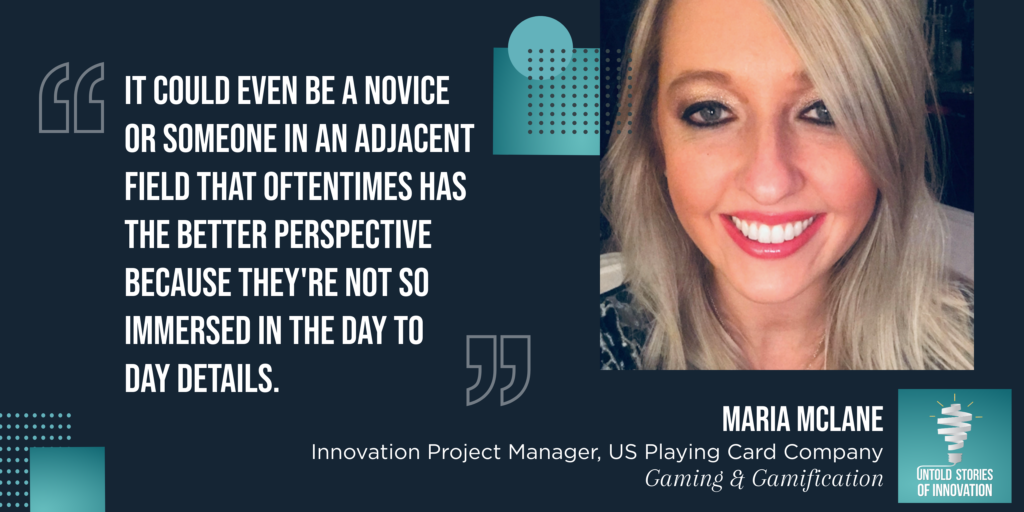
Katie [00:05:58] Yeah. You know, with such a classic kind of experience like playing cards and your company being one hundred and fifty years old, you know, I’d love to hear your thoughts on how you innovate, knowing that certain things are just so core to a culture like playing cards or gathering around the table together. Innovation in gaming could be challenging, like, how do you innovate without changing those traditions? But still try to move your industry forward–move that experience forward.
Maria [00:06:26] Sure. I mean, I think the one key thing that we want to retain is just that joy of play. We consider ourselves memory makers for our consumers. There probably isn’t one person that you would meet that didn’t say, oh, I remember sitting down playing euchre or go fish or rummy with my grandparents. And, you know, we’d all get together on the holidays and or on the weekends or whatever it might be and talk. And it was just a really a means for conversation. So we definitely wanted to keep that aspect of the games, but we really wanted to explore various unique themes and unique immersive experiences. It’s really not so much necessarily the story of–sometimes it can be the story of the inventors. But when you’re playing a game, you can be an animal or you can be a pirate. And it gives you the freedom to be politically incorrect, which a lot of people are looking for nowadays. So it really kind of takes you out of your environment. So we were looking for ways to be innovative in creating an experience outside of your day to day and how you act during your day to day.
Katie [00:07:47] So tell me where that’s led you. What are some of your recent products or projects that you’ve worked on as a result of those findings? Sure.
Maria [00:07:54] So we have three games out this year. Two are what we would classify as “party games”. And one is a little bit of a light strategy game. So I do a lot of inventor relations and I work with the inventors that are submitting these prototypes. It’s really interesting because we’ll get these prototypes in on, you know, index cards or, you know, people just do Clip Art off the internet. And so you really have to have a good imagination to see, you know, where the game can go. But in talking to these inventors, it’s really important to me to get their stories like, for example, one of the games that we have out is called Tattoo Stories. And it was created by a sixth-grade middle school teacher and his sole motivation for the game. People are very hesitant to do drawing games because, you know, well, I’m not a good artist or, you know, I’d want to show my work. But his sole purpose was to get his students to just reveal their creativity and kind of share it with the world and feel okay in doing that. So a lot of that is brought across with the game, whether it be from like a humorous scenario or, you know, a relatable story or something like that. So that’s one example. And then another inventor we worked with on a game called Shuffle Grand Prix. He was actually a video game creator.
Katie [00:09:20] OK.
Maria [00:09:21] And he would use kind of cards to simulate what was going on in the video game. But he said it was easier to do it on cards, that they could, you know, run statistics and different things. And he ended up just creating a card game out of it. But a lot of the inspiration was drawn from the video game, Mario Kart.
Katie [00:09:43] Really.
Maria [00:09:43] So it’s really interesting to see and hear like their perspective and why they created the game and how they created the game. And I think that really resonates for our audience.
Katie [00:09:53] In terms of our listeners–we broadcast to the innovation community, the inventor, the product designer,engineer and the innovation leader–that’s who is listening right now for the most part. We have other types of audiences, too. But you’re in such an interesting position where you’re having to make go- or no-go decisions at different concepts.
Maria [00:10:16] Mm hmm.
Katie [00:10:17] Tell us what role storytelling plays in the pitches that you hear. And maybe we can dig in a little bit to what storytelling techniques and strategies you think are most effective. So, what does that situation look like? You mentioned index cards. So tell us you’re at the moment of the pitch, how it comes to you, how you seek it out.
Maria [00:10:37] Sure. So we solicit for games in quite a few different ways. We have a submission link online. So sometimes people are just submitting their ideas online and literally writing out, you know, kind of an elevator pitch. And, but my favorite is when we go to conventions and they do what they call “designer speed dating.” So you’re literally talking to, you know, at a huge table, you know, 20 to 30 different inventors and you have about 30 seconds with each one and there’s not enough time to go into the game play. Right. So there’s not enough time to sit there and explain every single rule or every single mechanic. So the thematic and the characters of the game are really, you know, what, drive the story. And so that’s what’s interesting to me. And that’s what keeps my job, you know, alive and fresh because we see hundreds of game submissions a year. So it’s really how they describe. Like I said, the thematic and then also just, you know, individual characters or their inspiration for the game that really brings things to life. Wow. So 30 seconds or so tiny text box. That is an incredibly concise pitch. So, yeah.
Katie: What do you think are the most critical touch points? You mentioned thematic. What do you mean by that? That sounds like game design speak to my ears.
Maria [00:12:03] Sure. No problem. So, for example, I brought you a game today. It’s called Its Blunderful.
Katie [00:12:09] Thank you, by the way. I cannot wait to play that with our team at Untold Content. That’s going to be so fun.
Maria [00:12:14] So the thematic of that game is life’s awkward situations. So we all get into these. It could be something that someone had said to you that was awkward. It could be an experience that you ran into, but that would be the thematic of that game. And so I think what appeals to me specifically, you know what I’m looking for different themes of games is, is it relevant to our audience, even if it’s, you know, an animal kingdom or if it’s about climate or things like that. Is it on trend with things that are going on in our environment? Is it you know, is it interesting to people in a unique way? Game mechanics are not necessarily patentable.
Maria [00:13:01] If you think about, you know, rolling dice or moving up three spaces or spinning a spinner or whatever it might be. I mean, those mechanics aren’t really patentable. So it’s really the theme that sets the game apart from a lot of other things on the market.
Katie [00:13:16] And so it has to be resonant, has to align with trends that you see in culture or society. And so within that 30 second pitch, if it doesn’t clearly, if the inventor designer doesn’t have a clear pitch for how it’s relevant and aligned, do they have to be sharing data to prove that or is it sort of based on a shared understanding of those trends?
Maria [00:13:39] Now, I think it’s more of a shared understanding, but it’s also a hook. Right. So something, for example, I don’t know, I’m making it up, but maybe a circus theme. You know, I wouldn’t say necessarily that the circus is potentially on trend. Right this second, sir. But everyone can relate to it and it’s something. So if they’re bringing something alive from something that exists in society that a lot of people have, you know, an affinity for. Or maybe it brings up some sort of nostalgia.
Katie [00:14:09] OK, so interesting. So, OK, after you know that pitch. Well, actually, let me dig a little deeper.
Maria [00:14:16] Sure.
Katie [00:14:17] What’s the worst pitch you’ve ever had? You don’t have to call out the person or the game concept, but if you could kind of share with us, you know, what makes for a terrible recipe in that moment.
Maria [00:14:29] I think if they’re not clear. If someone isn’t clear on what exactly they’re trying to express, a lot of times people are hesitant to share ideas because they think they’re either, you know, not qualified or, you know, potentially they’re just nervous. Or maybe someone will think my idea is stupid. You know, that kind of thing. So I would say that I don’t know that there’s necessarily a bad pitch as long as you have confidence and you believe in, you know, the subject matter you’re talking about, because I’ve seen a lot of people make a lot of uninteresting things sound really cool and then a lot of, you know, what I think would be something really cool sound a little boring. So, yeah, I think it’s more about the passion with which they express it and how they talk about it than the actual content necessarily itself.
Katie [00:15:26] Do you believe that everyday people can be innovative?
Maria [00:15:31] 100 percent, 100 percent. That is one thing that I will have to give credit to the last company that I worked for, they absolutely instilled in me. It was a company called Axiom. OK, so I did a little bit of packaging product development.
Katie [00:15:47] OK.
Maria [00:15:47] And the owners of that company were very big on, you know, providing people with opportunities to be a part of brainstorming sessions. And they just never looked at it as you know, you didn’t have to be an expert in your field to, you know, make a new product or have a good idea. They believed it could even be, you know, a novice or someone in an adjacent field that oftentimes have the better perspective because they’re not so immersed in the day to day details and they can kind of look at the bigger picture. So they provided a lot of us an opportunity to do that. So I fully believe in that.
Katie [00:16:27] You know, to me it’s one surprise element of our conversation is I sort of assumed that there was an elite group of game designers and they’re controlling the game design universe. And I’m sure those people exist. Who’ve had like repeat success and that sort of thing. But it also sounds like for the role that you play, and the philosophy that your company brings to this market, you really look to hear, you open your ears to any idea. It’s coming from a sixth-grade teacher or even from a five-year-old. So, yeah, that’s kind of a unique approach. But I think it speaks to how critical diversity and inclusion are to innovation. And if you really believe that your consumer can be your best innovator. That’s really unique. I see innovation teams moving in that direction. Some faster than others.
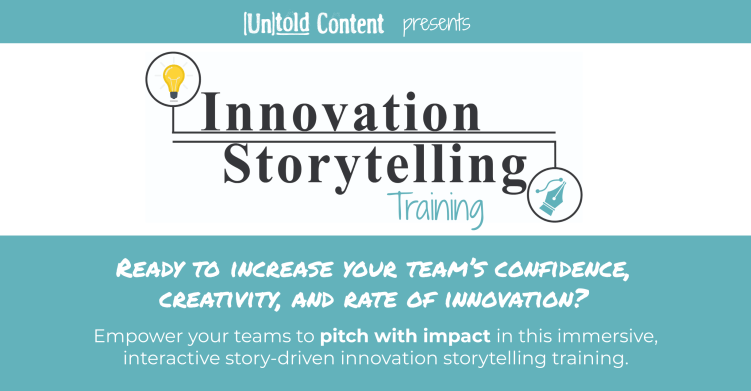
Maria [00:17:22] Sure. Absolutely. And to your point, a lot of people. I did not know that before I started in this industry. But with games specifically, I mean, most of the time it’s just a side hustle that people just really enjoy doing.
Katie [00:17:37] Its passion.
Maria [00:17:37] Yeah, absolutely. So, I mean, we deal with, you know, people that are doctors, people that are, you know, moms and dads, like it doesn’t matter, you know, what your experience is necessarily. It’s just, you know, creating a passion for the game and in the gameplay. So, yeah, oftentimes they don’t get the recognition they deserve. But yeah, we see it from a lot of different people. And recently I was in Chicago for the Chicago Toy and Game Fair, which is a huge toy and game conference and also trade show.
Katie [00:18:13] That sounds fun. Your job is not to sound boring or stiff.
Maria [00:18:18] It’s not boring. It’s really fun. We get a lot of play time. You know, not a lot of companies can say that. So that part of it is really cool. But I had the pleasure of being a judge for the young inventors’ challenge. And these kids were, you know, anywhere between, I think like first and fifth grade maybe. And they were so adorable and so well-spoken. And their ideas just I mean, you know, we’re asking them questions and you can tell, you know, a few of them maybe mom and dad had coached a little bit. But other than that, I mean, they really just had these great ideas. One couple of kids specifically that I remember. They really liked going to the library and they made her a really cute game about a librarian and how, you know, you act in the library.
Katie [00:19:06] Oh, so neat. So actually, it’s a behavior like it’s actually a way to help children understand why you behave certain ways in the library.
Maria [00:19:13] Yeah, it was super cute. And so that was really fun. But yeah.
Katie [00:19:19] I love that. OK. So I want to fast forward now. That gives us such an interesting perspective on that moment that the inventor, whether that’s a 5-year-old or an eighty-five-year-old, they’re pitching to you. Now, you’re having to make some judgment calls and you’re having to get internal buy in around which concepts to prioritize. How does that part of the pitch go when it’s time for you to bring that message internal and start to become a cheerleader for certain concepts?
Maria [00:19:49] Sure. And that oftentimes is the hard part because you know, it’s funny because my team, we’re all a little different and we have different player profiles. Some people are super competitive.
Katie [00:20:05] Player profiles. OK, hold on, back up. This again, sounds like an expert term. So what does that mean in the game design world?
Maria [00:20:11] OK, so we look at things and we’ve kind of broken down what we call a social gamer, so people that, you know, play on average about once a week, could be once a month. They play card games. They play board games. But we really wanted to break these player profiles down a little bit. So we have four player profiles that we kind of categorize people into, if you will. So we have the competitor. These are the people that play to win and they’re all about the strategy.
Katie [00:20:42] Sure. We all know that person in our friend circle.
Maria [00:20:48] And then you have the Joker. These are the people that are just, you know, in it to razz people, get a laugh, that kind of thing. You know, we have our feelers, which these are people that could either be playing with a purpose in terms of learning something new or it could be trying to, what we say is more like a revealing aspect of the game is getting to know people on a deeper level. And then we have our connectors, which these are the people that are hosting the game nights. They’re bringing everyone together and they’re not necessarily as concerned about the game itself, but just bringing their friends together and having a good time.
Katie [00:21:28] Yeah. Sure.
Maria [00:21:28] So those are our player profiles.
Katie [00:21:30] So internally you have, so sort of similar to the way another workplace might take at the enneagram or talk about, you know, strengths finder, strengths assessments. You kind of self-identify internally based on your approach to play.
Maria [00:21:47] Yeah, exactly.
Katie [00:21:48] Do you think other companies do that. Is this something? I’ve never heard of another company that did that.
Maria [00:21:56] No, probably not. I’m probably giving away some secrets here but yeah. So we made everyone in our office take, you know, a little quiz.
Katie [00:22:06] I love it. I think that’s valuable.
Maria [00:22:09] And it’s interesting to them, too, because we can make really good recommendations for games based on what we think they’ll like or what kind of combination of profile they are. So it’s really a kind of a curating system as well.
Katie [00:22:24] Sure. And I bet too by self-identifying, by knowing that–OK, I am–I tend to lean towards competitor. I am the competitor. And I lean toward that kind of experience. But I have to be I have to know that I have to own that and be aware so that when you come to me with a concept that’s more aligned with the feeler, I can keep my mind open.
Maria [00:22:46] Exactly. And that’s the important part, because that’s what I was saying. When we’re vetting games as a team we’ll often say, well, it’s not really my cup of tea, but I can see why so-and-so would like it.
Katie [00:22:59] Gotcha. Sure.
Maria [00:23:01] So we’re trying to keep a good portfolio that’s very balanced with the type of combos of player profiles and things like that. We don’t want to be too one sided or too leaning towards any one specific audience. We really want to make sure there’s something out there for everyone.
Katie [00:23:17] You know, I think so often innovation teams build personas or document personas for their consumers or for other business partners or retailers. But internal personas is something I don’t see as often among innovation teams that they’re acknowledging and understanding the deep, innate desires and needs, social, emotional needs, functional needs, professional goals of the people internally who they have to get buy in from. But that could that’s another really smart strategy to use as you’re thinking about how to take something that you feel passionately will work and pitch it internally to get that buy in you need to bring it to life.
Maria [00:23:54] Exactly. Yeah. So we spent one day. When I first started, I had put together kind of like a sprint, like a five-day rapid prototyping, like we’re going to get in here and create a game ourselves type of thing.
Katie [00:24:10] Love sprints. Were you so exhausted?
Maria [00:24:13] Yes. It was really fun, but since I had to organize the whole thing, I just wanted it, you know, to obviously go really well. And so I kind of felt a lot of pressure. But because we were talking about games and play, you know, made it a little bit easier. But we spent a large portion of that talking about something as simple as, you know, what do people find funny and why do they find it funny? And we really did a deep dive for like a half a day on what people find funny, you know? And it was just as simple as that.
Katie [00:24:48] And just as productive, too. So you kind of allowed the space to for that brainstorming that ideation session to go where it needed to go.
Maria [00:24:57] Yep.
Katie [00:24:59] That’s really neat. Yeah. The sprint approach is an incredible way to get condensed productivity and collaboration to happen. Love. We oftentimes use that methodology at Untold Content when we’re trying to help a client come up with, you know, a certain approach or a story or product design. So awesome. So I’d love to hear, you know, what advice you have for inventors. Game designers for how they could get more rapid success for their ideas. You know. Do you have any advice for them?
Maria [00:25:37] I think the first thing would just be don’t listen to all the noise if you believe in something. Then just have the passion for it, own it. Again, I want to go back to I think that fear drives away from innovation. Fear of unknown. Fear of what people might think of you. You know, they might have presented their concept to a family friend or whatever it might be. And oh, that’s stupid. Or, you know, I hate nos. So I feel like if you bring the passion and your purpose for why you’re creating something, I think that’s definitely really key in terms of rapid prototyping. Don’t worry about making it perfect. We don’t care if it’s perfect. We don’t need it to be perfect. Use what you have around you. I mean, be a kid again and like, go get some construction paper and some scissors and, you know, make your little parts and pieces and, you know, have fun with it. I don’t think. I think people are so afraid of feeling the need to present something that’s whole and too perfect when it could be just as good in prototype phase, as long as you’re able to get your idea across, we can imagine what the future might look like for that game or that product.
Katie [00:26:57] I love that. That’s amazing advice. So one last question. Is your dad so proud? That you’re in innovation that you, you’re in a large company, but you are also serving as a kind of entrepreneur inside of that organization?
Maria [00:27:15] Absolutely. Yeah, I think he’s totally really proud of me. Which I am of him as well. But yeah, we still. He calls me probably every day and he’s like, hey I got a new idea for a game. And what are you going to do about this?
Katie [00:27:33] Have you brought any of your dad’s games to life?
Maria [00:27:34] Not yet. But he does work in the financial industry and there’s a lot of financial illiteracy that goes on. So a you know, a lot of what we do, too, is we’d like to use games to educate people. That’s a lot of our kids’ line. Our kids’ line is about, you know, teaching kids emotional intelligence and things like that. So, yeah, call me every day and pings different ideas off of me. And I’ll tell him like, oh, you know, there’s 20 games out on the market like that already or that one’s worth exploring.
Katie [00:28:07] Oh, man. You know what? I promised you that was my last question, but I totally lied. We forgot to talk about gamification.
Maria [00:28:13] Yes.
Katie [00:28:13] Inside the innovation community. Yes, I promise. This is the last thing. I just want to hear your thoughts on how innovators across all industries and sectors can be utilizing gamification in their innovation process or to change how they think as they design.
Maria [00:28:33] Yeah. Well, what we hear a lot is, you know, you think of gamification oftentimes as being something that you do on the computer, whether it could be, you know, applying for a job or, you know, whatever it might be. But getting back to the tabletop world that I live in, it’s so interesting to see teachers or work groups like a lot of workers will be like, oh, yeah, we played a game like as an ice breaker and it helps you get to know your colleagues. It’s really fun to see the motivations that people are expressing with their game. So I’m a huge proponent of gamification. Anything to make the mundane or the ordinary a little bit more fun. Why not? And it can be educational in the process.
Katie [00:29:21] I completely agree. Thank you. Thank you so much for being here.
Maria [00:29:25] Sure.
Katie [00:29:25] This has been a really fun conversation and I cannot wait to play Its Blunderful with the team.
Maria [00:29:30] Good, I hope you have fun.
Katie [00:29:31] I will, thanks. All right.
You can listen to more episodes of Untold Stories of Innovation Podcast.
*Interviews are not endorsements of individuals or businesses.

